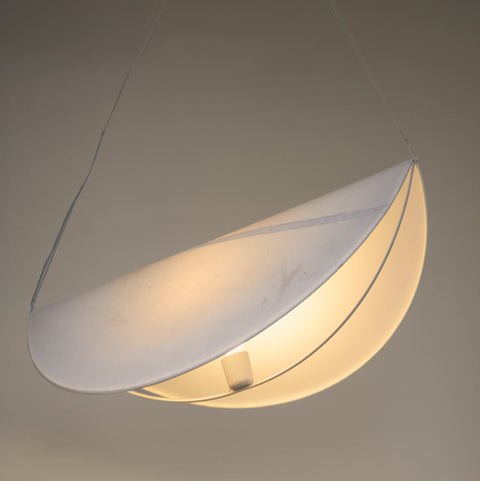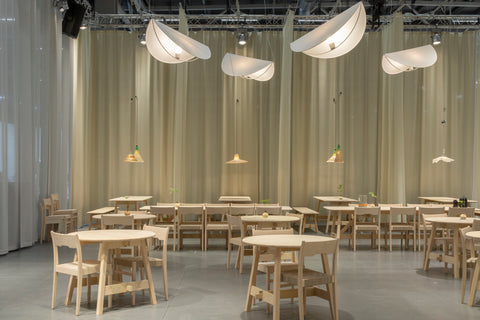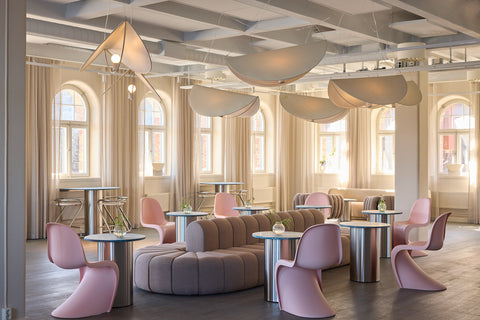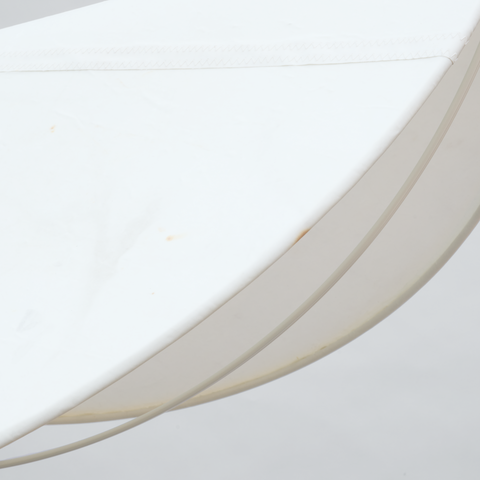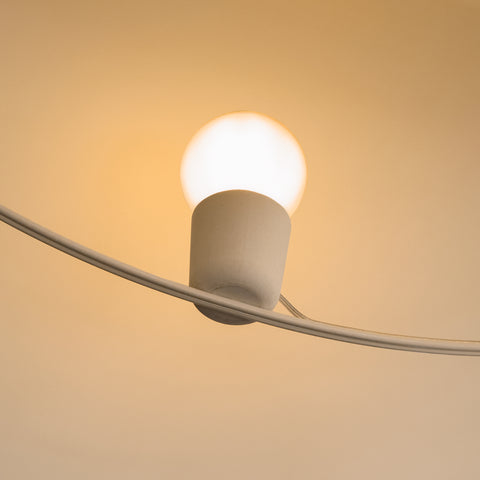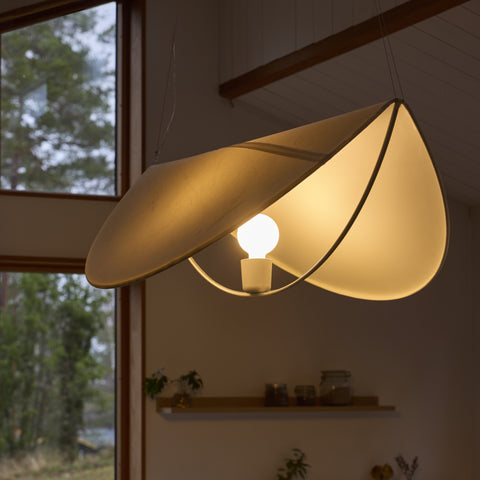Reminder (002) – Pearl
Regular price18 750 kr Sale priceStarting as a custom order for Fotografiska, the ceiling lamp draws inspiration from the sea surrounding their Stockholm museum. The lampshade, crafted from discarded sails, reflects the material’s history, creating a dynamic interplay of light.
Its open half-circle shape is inspired by an oyster, and beneath the shade, the light source – perched atop a cup made from waste ceramics like a pearl in an open shell – emits a warm, inviting glow.
The lamps work beautifully as a set, and when hung together, they evoke the gentle movement of waves, yet they also stand out on their own. It's the kind of object that will bring you joy every time you see it, along with stories to share over dinner.
Design: Louise Bahrton/Enkei
The lamps are handmade and produced on demand with limited availability. Expected delivery within 3 months.
Currently shipping within Europe, incl the UK, Norway and Switzerland.
Produced on demand with limited availabity. Expected delivery within 3 months. Currently shipping within Europe (Inc UK), Norway & Switzerland.
By selecting "Order" you are agreeing to our
Terms Of Service
and acknowledge reading our
Privacy Policy.
Pickup currently unavailable
Light Source: E27 bulb (not included)
Power Consumption: 12W
Luminous Flux: 1521 lm
Dimmable: Yes
Color Temperature: 2700K
Connector Type: DCL
The shade, crafted from discarded white sails, reflects the material’s history and ha traces from it’s former journeys. The living material can therefor have a lot of patina with colour marks, crossing seams or minor texture differences making –each sail unique.
Beneath the shade, a warm-gray cup, rests on a white curved, scrap-based wire.
The light source emits a warm and inviting glow thruthrough the shade.
Lampshade: Repurposed sail fabric
Concrete Cup: ReCeramix™* and oyster shells
Wire Structure: Recycled metal scrap
Socket: Proclain
*ReCeramix™ is an alternative to white concrete. It is developed with the goal of maximising waste utilisation and minimising CO₂ emissions. It reduces cement use by up to 80%, powered by a circular process and green electricity.
